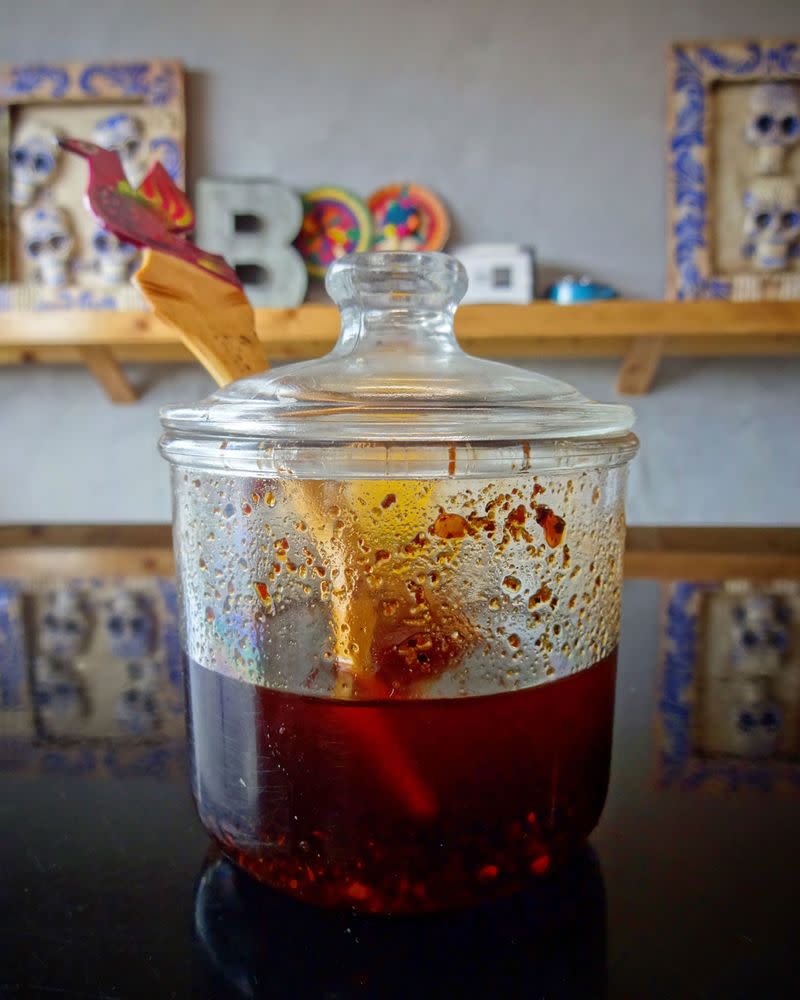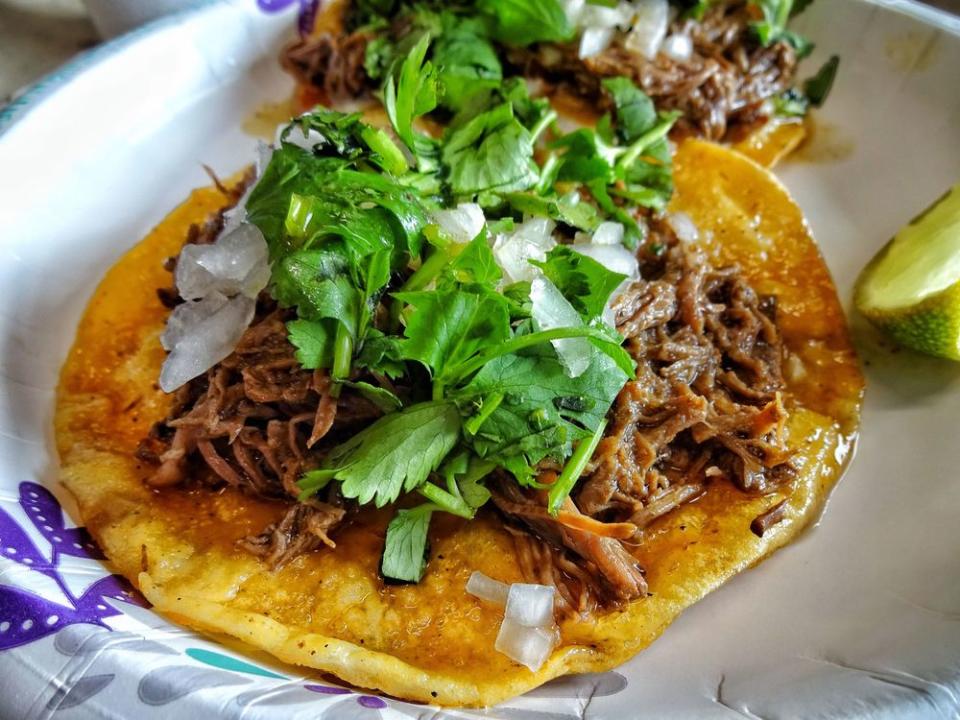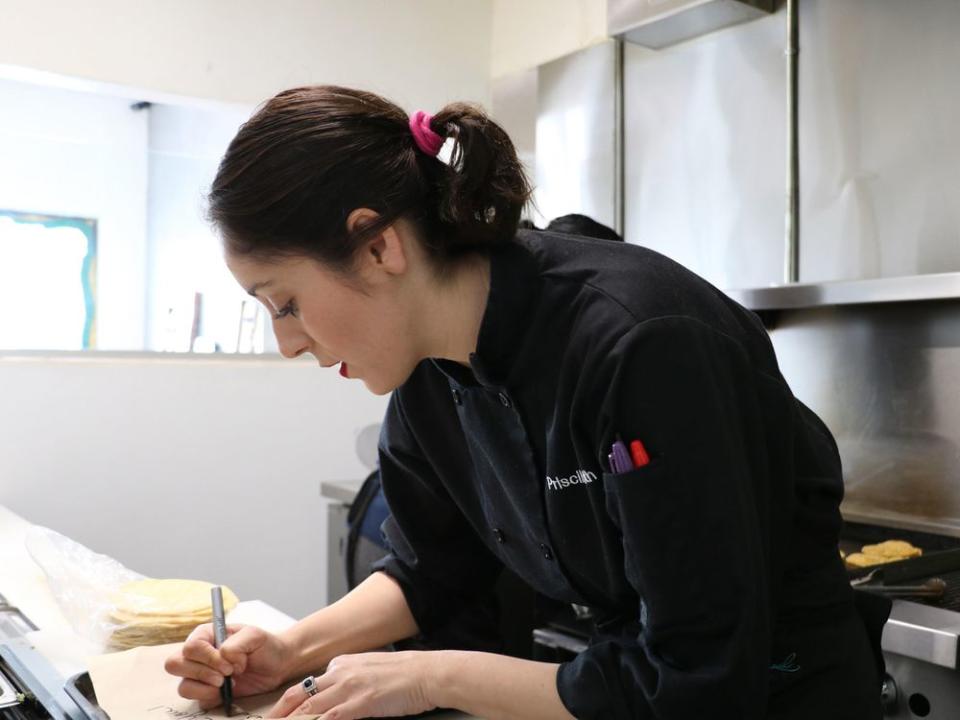Some of The Best Tacos in Tijuana Are Actually in San Diego
Growing up Mexican, tacos are a part of life from just about as early as you can remember, and at whatever age it is that we develop motor skills, yours will begin the all-important process of understanding just how to handle the taco--how to pick up the tortilla without losing the insides, the roasted meats, the stews, the braises, the confits. You will master, simply because you must, the art of the taco pinch; when the alternative is no carne asada, carnitas, no guisado, no fresh-caught fish, you just learn. The action becomes so innate, you will have seen, handled, consumed so many tacos in those early years, your education so complete, you may never bother to ponder the question, later on in life, what makes a truly great taco? What belongs in a truly great taco?
Chef Priscilla Curiel has some ideas. She is the one-woman show behind the new Tuétano Taqueria in San Ysidro, which is the part of San Diego right along the border, steps away from one of the world’s greatest taco centers, Tijuana, where Curiel grew up. In Tijuana, tacos de adobada (adobada being the regional name for al pastor), seafood tacos, carne asada, beef birria, and tacos varios (regional name for tacos de guisado) are part of the DNA. Curiel comes from Tijuana food royalty—her family runs the iconic breakfast destination, La Espadaña, and Talavera Azul in Chula Vista, over on the American side, where Curiel worked as a hostess, waitress and chef on the breakfast shift, before striking out on her own. For Curiel, like so many of the millions living on either side of the world's busiest international land crossing, the border is not a boundary, something that stops you from going about your business; it is merely something you power past, something you work around, often on a daily basis.

Occupying a bright gold-painted storefront next to a non-profit art gallery, Curiel’s “plastic-free eatery” is a very plain space, featuring a few framed calaveras (skulls), a handful of tables and a counter that wraps around the perimeter—the cashier’s stand is a shelf with a white board menu propped against its bare counters. The kitchen is tiny, minimally equipped, nearly spare. And yet, there is life here. The charm of the aromas of dried chiles, cumin, toasted corn and garlic fill every cubic inch of space with the thrill, and energy of the street cart. The tacos—these are a force to be reckoned with.
The center piece of the Tuétano menu is a slow-stewed Tijuana-style beef birria, a sublime brew of dried chiles, spices, beef juices; you get this with a shot of rich consommé, and a highly recommended jab of heat from salsa macha, a gritty concoction of scorched chile de árbol and garlic in vegetable oil. That Tijuana staple, the quesabirria, which is a beef birria taco with melted cheese, is also on the menu, but Curiel takes on this unctuous northern tradition with her own twist, the beef birria and roasted bone marrow taco—a few delicious bites exponentially more decadent than anything buried in molten queso.
Tacos will always be with us, it is very difficult to imagine a Mexico where the youngest are no longer inducted into the culture by rote, but the great taquerias only appear once an eclipse. There is Wes Avila's genre-busting Guerrilla Tacos in Los Angeles, Tacos de Cazuela Carmen in Oaxaca, El Quequito in Mexico City, El Fenix in Ensenada—all dealing in different corners of the taco realm, all offering something like nirvana before you have fully appreciated the first bite.

Tuétano Taqueria is a strong contender for this elite league. Curiel's over the top, “dirty style” taco of beef birria, with the bone marrow and the salsa macha, accented with diced onion and cilantro, and served on a fine corn tortilla made with masa from National City’s worthy Tortilleria La Estrellita (on a circular canvas of nixtamalized masa, all taquerias are judged), is a Molotov meets The Who concert on your palate. The taqueria’s short menu also includes family favorites like a homey, comforting rajas (roasted poblanos) con crema, a nice cochinita pibil inspired by the Yucatán, and a spicy longaniza, that’s also used to add a sweet finish to Curiel’s frijoles de la olla (whole beans). You can get tortas and Sinaloa-style quesadillas, with tasty flour tortillas made from scratch by Patricia, Curiel’s cook.
Curiel is part of a group of women now leading the Mexican food scene in San Diego—there is El Jardín’s chef Claudette Zepeda-Wilkins, Galaxy Taco’s chef de cuisine Christina Rivera, as well as cookbook author and Master Chef winner chef Claudia Sandoval. Curiel's personal style is part Tijuana, part Chulajuana (the mostly affectionate name given to Chula Vista for the number of Tijuanans living there), with a touch of Chicano-Mod (the suddenly trendy Barrio Logan, a historic Chicano stronghold, is a favorite haunt). This is taco culture with an attitude, attitude being something San Diego food is not very much known for; Tuétano (or, bone marrow) feels like a blast of fresh air. This has much to do with the fact that Tijuana, the infamous border town that rose out of the dryness of Prohibition-era Southern California, firmly remains Curiel's taco muse; ask her to cite specific influences, and she'll rattle off a whole list of Tijuana favorites—everything from the stands clustered around the perimeter of the Mercado Hidalgo, to El Poblano, up near the Otay Mesa crossing, to a nameless stand in the Colonia Libertád across from a secondary school.

After a stroll through the menu at Tuétano, it seems likely that Curiel herself could end up being a source of inspiration for other forthcoming taqueras and taqueros—not since Tijuana's hotly sought after Tacos Kokopelli opened in 2012, with its edgy, modern, grilled seafood tacos, has there been a more solid opening in terms of sheer deliciousness and inspiration. So what if the map says you're in another country—for the first time in years, anyone headed for Tijuana will want to stop here first.
Bill Esparza is a Los Angeles-based food writer. He is the author of L.A. Mexicano: Recipes, People and Places.

